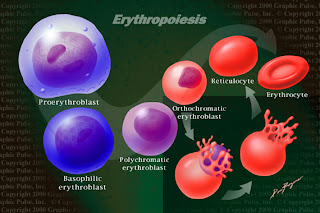Totipotensi properties
Totipotensi the nature of the plant tissue used to obtain uniform seedlings in large quantities and cepat.sel plant cells can be totipotensi (full potential), which are cells that can sustain the potential of the zygote to form all of the mature organism.
Totipotensi theory in kemukanan by G. Heberland in 1898. In 1950, FC Steward and his students obtained intact carrot plants from somatic cells carrot root phloem cells.
Totipotensi stages in carrot cells to form new individuals are as follows:
- Carrot root phloem of plants
- Cut into small pieces each 2 mg
- Grown on media bernutrien
- Cells divide, forming callus (tissue that has not differentiated)
- Calli were separated in a nutrient medium
- Callus formed embryo splitting
- The new plant is formed
Based on the nature totipotensi, one of the plant can be cloned into genetically identical plants.Usahan obtain a new individual from a cell or tissue known as a bunch of cell culture or tissue culture. Principles of cell culture or tissue culture together with the child's principle in vegetative cuttings premises. In cuttings , each plant potonng part will grow into a new individual. However , the tissue culture method should pay attention to the sterility of equipment and materials.
 |
| tissue culture |
In tissue culture, cells or tissues are grown to form an organism that has a complete section.Nutrition and hormones auxin and cytokinin in the growth media, will spur pebelahan cells resulting in growth. If the plant were injured, traumalin acid will heal the wound.The hormone auxin in the injury causes rapid cell division and form a smooth lump called callus is not yet differentiated. Callus cells could be developed into new individuals. With tissue culture, the entire plant can be a new individual dikembangkn (Solomon et al.2005).
The advantage of using tissue culture techniques
- Free to determine the plant to be cultured
- Relatively short time required
- Does not require a large room
- Quickly produce a new crop of one crop


















